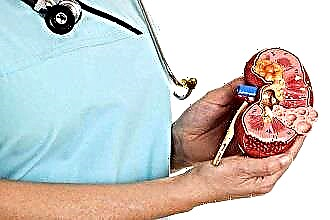One of the primary types of examination in cardiology is considered auscultation, that is, listening. In this case, the doctor with the help of a phonendoscope listens to the sounds that are formed in the heart. Normally, a person can hear two basic tones. If, in addition to them, some others appear, they are defined as noises. Most often they are signs of pathologies, but sometimes they are present in the norm. Systolic is a murmur that is heard between the first and second tones and is formed due to turbulence in the blood flow.
When a systolic heart murmur occurs
The pathogenesis of the phenomenon is simple. A systolic murmur at the apex of the heart occurs due to a violation of the linear flow of blood during the contraction of the ventricles, as a result of which vortices appear, which create additional sounds. This is observed with constrictions, abnormal formations, regurgitation (pathological return), accelerated blood flow (due to changes in composition, as in anemia).
If normal tones sound like clear beats, then pathological noises resemble buzzing, hissing, rustling. They are accompanied by additional phenomena - "cat's purr" (diastolic tremor), holding in the axillary region (area of the scapula), rapid heartbeat.
Depending on the etiology of such auscultatory phenomenon, functional (they are also called innocent) and organic noises are distinguished. The first includes all with a transitory character. And under certain conditions, the normal state is restored. The second type occurs during structural changes in cardiac tissue. In this case, the process is considered non-negotiable, and treatment is difficult.
Functional (innocent) noises appear in such cases:
- physical stress;
- nervous excitement and neuroses;
- fever, infectious diseases;
- hyperthyroidism;
- anemic syndrome;
- asthenic constitution;
- pregnancy;
- relative valve failure.
Organic noises are typical for such pathologies:
- coarctation (narrowing) of the aorta or pulmonary arteries;
- expansion of the aorta or other vessels;
- insufficiency of the aortic valves;
- additional abnormal chords;
- mitral or tricuspid regurgitation;
- valve stenosis;
- combined defects.
In a 17-18 year old adolescent with an asthenic physique, in some cases a physiological systolic murmur is found on examination, but it is considered a normal variant.
What does the noise in the child say?
The detection of systolic murmurs in the heart of a child does not yet speak of dangerous diseases. Often, a similar condition is found in infants, however, the reason is the imperfect development of the cardiovascular system, the disproportionality of certain structures. This usually goes away with age.
Another source is the individual congenital structural features of the heart (additional chords (cords connecting the papillary muscles and valves)). This is considered a normal variant and does not require any treatment.
Often this phenomenon develops due to physical or nervous stress, fever or infectious diseases. When these conditions pass, the systolic murmurs disappear.
There are many dangerous diseases in which this diagnostic sign is also detected. These include:
- defect of the interventricular septum - in this case, blood is dumped from one ventricle to another;
- anomalies of the pulmonary veins and aorta - include vasodilatation or narrowing (coarctation);
- congenital valvular defects (insufficiency or stenosis) - in this case, the blood returns to the cardiac cavities, or it is difficult to pass through the narrowed lumen;
- combined pathologies (tetrad, pentad of Fallot) - combine several developmental anomalies at once.
In this case, the danger is much greater, more often such conditions require surgical intervention. Nevertheless, with early detection of pathology and proper treatment, the prognosis is usually favorable.
Diagnostics and further actions
If you or your child is diagnosed with a systolic murmur, this means that it is necessary to undergo additional examinations in order to identify the specific cause of this phenomenon.
Moreover, the following diagnostic procedures are used:
- electrocardiography (ECG);
- Holter daily ECG monitoring;
- chest x-ray;
- echocardiography (ultrasound examination of the heart);
- functional stress tests (bicycle ergometry, step test);
- magnetic resonance imaging or computed tomography.
Appropriate laboratory tests are performed, which include general and biochemical analysis of blood and urine, rheumatic tests, coagulogram and other specific studies.
In addition, the patient will need a consultation with a rheumatologist, allergist, and endocrinologist. If no organic changes are found, then the person is simply put under control. This means that he needs to periodically come to the hospital for a preventive examination. General strengthening agents (exercise therapy or physiotherapy) are also prescribed. If serious pathologies are identified, the patient is prescribed treatment.
Conclusions
Systolic murmurs appear due to disruption of normal blood flow in the cavities of the heart, changes in blood composition, or the presence of obstructions and abnormal structures. Such sounds are heard at the time of contraction of the ventricular myocardium.
Functional (innocent) murmurs occur in pathological conditions that are not associated with a violation of the internal architectonics of the heart, and usually disappear over time. Organic ones develop during structural changes and signal serious diseases. To establish the exact cause, additional examinations are prescribed.



